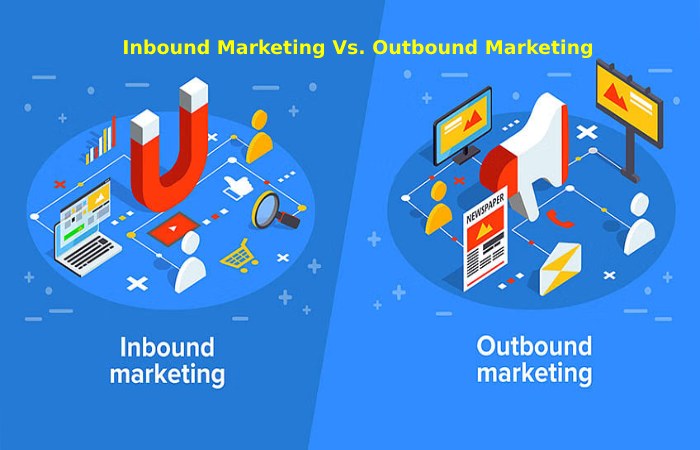Table of Contents
Introduction
In terms of digital marketing, inbound marketing means using a combination of marketing channels (most often content marketing, SEO, and social media) creatively to grab people’s attention. A successful inbound marketing promotion aims to increase reach and drive quality traffic, engagement, and conversions with owned media.
HubSpot, one of the largest providers of inbound marketing software, coined the term “inbound marketing” in 2006. HubSpot defines inbound marketing as acquiring, converting, closing, and satisfying customers.
Using different types of content at various stages of the lifecycle, the “Entry Methodology” is “the best way to convert strangers into customers and organizers of your business.”
Inbound Marketing Vs. Outbound Marketing

The importance of understanding the differences between inbound and outbound marketing is in the name. Inbound marketing focuses on attracting potential customers, while outbound marketing boosts a company’s offering. It is about gaining attention, while outbound marketing usually involves buying it.
Inbound Marketing: How to Attract Potential Customers
Owned media are the channels over which a company has control. For example, your website, blog, social media brand profiles, and YouTube channel. You decide what to post, how to post it, and when.
Earned media is the coverage you get through your hard work. Offline, this contains traditional newspaper and magazine coverage. Online, these are things like coverage on news sites, often achieved through digital PR but also mentioned on social media, use of a campaign hashtag, conversations on online forums, and online reviews. Line.
You have less control over received media because it’s a reward for your work in your inbound marketing campaign.
Outbound Marketing: Paid Advertising
On the other way, outbound marketing is more associated with payment means, which can be traditional offline ads, PPC and display ads, or paid emails. Paid media also includes social media advertising, for example, advertising on Facebook or promoted posts on Twitter.
Although commonly associated with outbound marketing, it should be noted that social media advertising is often a powerful way to develop the performance of inbound marketing campaigns. For example, publicity on Facebook allows you to support your content and campaigns to your target audience, no matter how specific.
Benefits of Inbound Marketing
Increase Confidence
It is creatively and engagingly giving potential customers the information they want, even if they don’t know it.
It’s not about generating unwanted sales at every opportunity. Use inbound marketing to present your brand as a helpful and trusted resource and hopefully show up when a customer is about to convert.
Protect Yourself from Single Channel Dependency with Inbound
By seeking excellent traffic from a variety of sources (organic search, social media referrals, referrals from other sites talking about your fantastic product or service), you reduce reliance on a single channel and, with it, the risk associated with it.
Incoming Measurement
It has always been challenging to measure the impact of marketing work in a way that can demonstrate a meaningful ROI, and the key is to be clear from the start.
You may not be able to track the number of leads generated as a direct result of your campaign, but you can follow the number of downloads of your resource, the average length of time people watched your video, the number of followers on your social networks, and the number of social networks visited, how many you have earned, etc.
When planning your campaign, be clear about what you want to achieve and measure it appropriately and honestly.
This way, everyone’s expectations are set and, therefore, more likely to be met.
Inbound Marketing as a Long-Term Strategy
Successful inbound marketing campaigns don’t happen overnight.
It would help if you had time to plan, implement and refine. They can also be very labor intensive – you may need content creators, designers, developers, outreach specialists, social media dealers, and a campaign manager to make it happen.
However, if you put your time and effort into the right timeless campaign. You should have something that will continue to bring you value for the foreseeable future.
Examples of Inbound Marketing
- Content centers with how-to videos and product or service information.
- User-generated content and social media campaigns such as photo contests or collecting reviews.
- Interactive online content items are created with affiliates to enhance digital outreach and advertising opportunities.
Conclusion
If there’s one thing to remember about inbound marketing, tracking performance and fine-tuning your approach accordingly is essential.
Testing is also done here: find out which messages, content types, images, calls to action, etc., work best for your target audience, and make sure you implement them permanently or in your next campaign.
